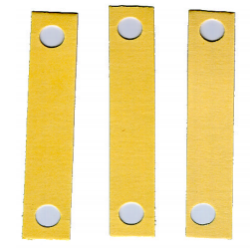Source Institutions
Source Institutions
Add to list Go to activity
Activity link broken? See if it's at the internet archive

In this math lesson, learners identify the relationship between the number of sides in a regular polygon and the number of struts needed to make each polygon rigid. Learners build polygons using strips of paper and paper fasteners to explore the attributes of triangles, rectangles, pentagons, and hexagons. From their explorations, learners discern that triangles form the only rigid polygon. Learners are then challenged to determine the least number of struts or supports they would need to add to the rectangles, pentagons, and hexagons to make them rigid. Learners record their findings in a chart and look for patterns. They use the pattern to state a rule that shows the relationship between the number of sides in a polygon and the number of struts needed to make it rigid. To further reinforce these concepts, learners make a graph showing this relationship. Learners use the graph to predict the number of struts needed to make different polygons rigid. Finally, the group discusses the relationship between the number of sides of a polygon and the number of triangles formed by the struts. Learners look for a pattern in order to make a generalization.
- 45 to 60 minutes
- 45 to 60 minutes
- $1 - $5 per group of students
- Ages 8 - 11
- Activity, Lesson/Lesson Plan
- English
Quick Guide
Materials List (per group of students)
- Large summary chart
- Large sheet of graph paper
- Polygon models made from paper strips and fasteners (Activity Sheet: Template Page-Strips)
- Strips of paper, 1 cm x 7 cm, with one hole punched close to each end (using heavier weight, i.e. manila folders)
- Plastic bags for paper strips
- Strips of paper, 1 cm x 30 cm, with holes punched on one end of each strip (see Activity Sheet: Template Page-Struts)
- Paper fasteners (1/2 inch)
- Scissors
- Sheets of graph paper (Activity Sheet: Graph Grids)
- Several hole punchers
- Student journals
Subjects
-
Mathematics
-
Algebra
- Patterns
-
Data Analysis and Probability
- Data Analysis
- Data Collection
- Data Representation
-
Geometry
- Plane Geometry
-
Measurement
- Polygons
- Reasoning and Proof
-
Algebra
-
The Nature of Technology
-
The Design Process
- Problem Solving
-
The Design Process
Audience
To use this activity, learners need to:
- see
- read
- touch
Learning styles supported:
- Involves hands-on or lab activities
Other
This resource is part of:
Access Rights:
- Free access
By:
Rights:
- All rights reserved, PBS, 2012
Funding Source:
- US Department of Education
